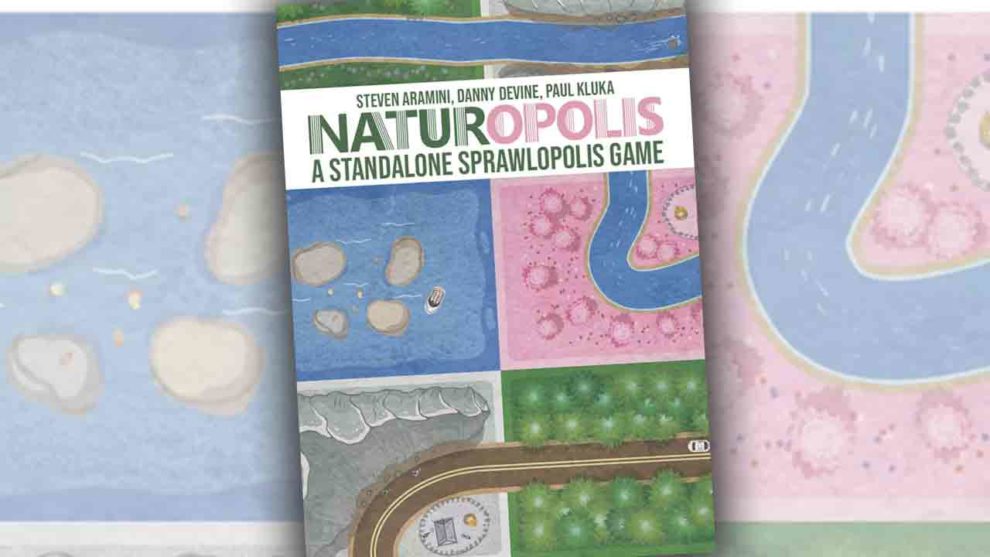Disclosure: Meeple Mountain received a free copy of this product in exchange for an honest, unbiased review. This review is not intended to be an endorsement.
Resplendent Nature
Are you tired of all the hubbub of city life? Sick of all the constant noise and distractions? It might do you some good to get out of the rat race for a bit and escape to the idyllic countryside. Enjoy the pristine beauty of the countryside, and remember: it’s your responsibility to ensure it stays unspoiled and lush.
Naturopolis is the latest wallet game from publisher Button Shy and is a direct successor in their Sprawlopolis line of games. This game, along with Sprawlopolis and Agropolis and their associated mini-expansions, all feature the same core gameplay mechanics. Either solo or as a duo, you’re working to play cards from an eighteen-card deck and build a landscape of some kind, with different point-scoring mechanisms. Natuoropolis, however, takes a different twist on the theme, focusing on building natural beauty and scenic landscapes, while penalizing you for tainting that beauty with too many roads and asphalt.

Building a Better World
Those familiar with the other games in this series will recognize the gameplay pattern. Setup only takes a few moments. Shuffle all eighteen cards together and pull three off the top. One side of the cards features the aforementioned landscapes, and the other side of each card is a different scoring objective. These first three cards will be placed objective-side up, indicating your unique scoring mechanisms for that particular game. Then, you’ll deal three cards to the first player, and one card to any additional player(s). Flip the top card of the deck to start you off, and you’re ready to go!
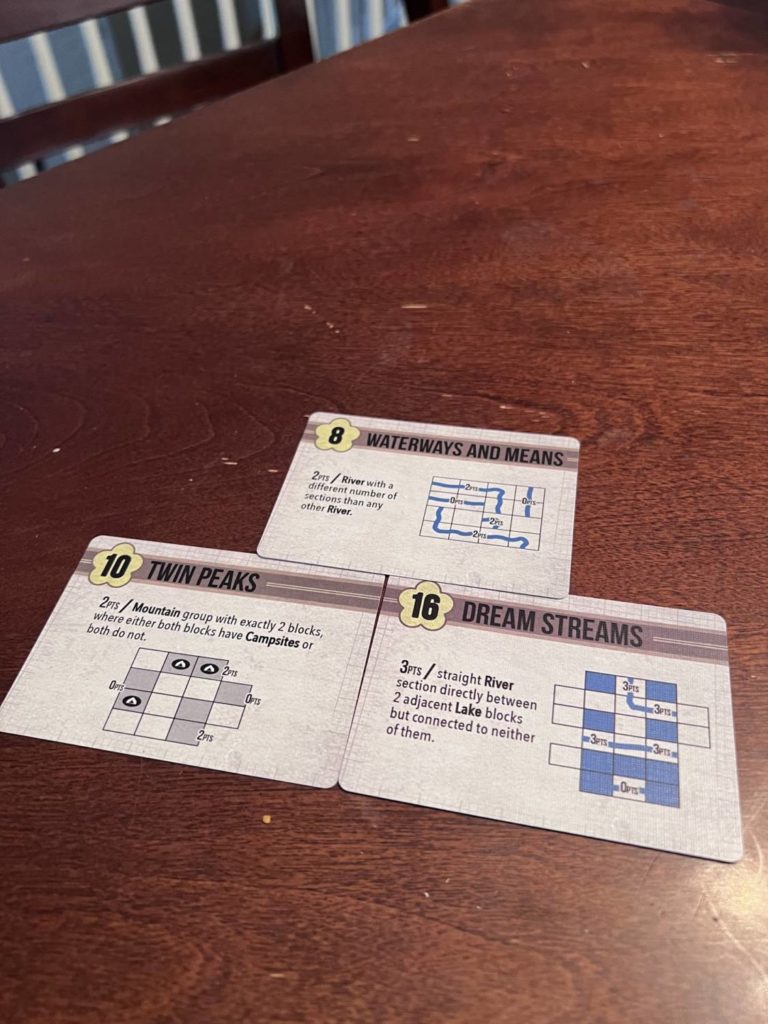
Turns are simple: you will simply add a card to the tableau in front of you. Every card features one quadrant of each biome in the game: forests, meadows, mountains, or lakes. Some cards feature rivers, some feature roads, and some feature campsites. You may place your card so that it overlaps or lines up edge-to-edge with any card already played in the tableau, and it may even create gaps in the landscape so long as the other placement rules are followed. After placing your card, you will pass the two remaining cards in your hand to the next player. This repeats with each player placing one card over and over again until the deck is fully depleted.
Compromise in Beauty
When all is said and done, you’ve got a wonderful natural landscape to look at… but what does that mean? By taking a look at the three objectives you drew at the start of the game, you can total up your target score by adding the numbers on the three objective cards together. In general, scoring parameters that are harder or rarer to pull off may only add a couple of points to your target score, whereas easier objectives will add more to your target score. Beat that score, and win the game. Fail to beat it? Tough stuff, you lose, and your park is ugly.
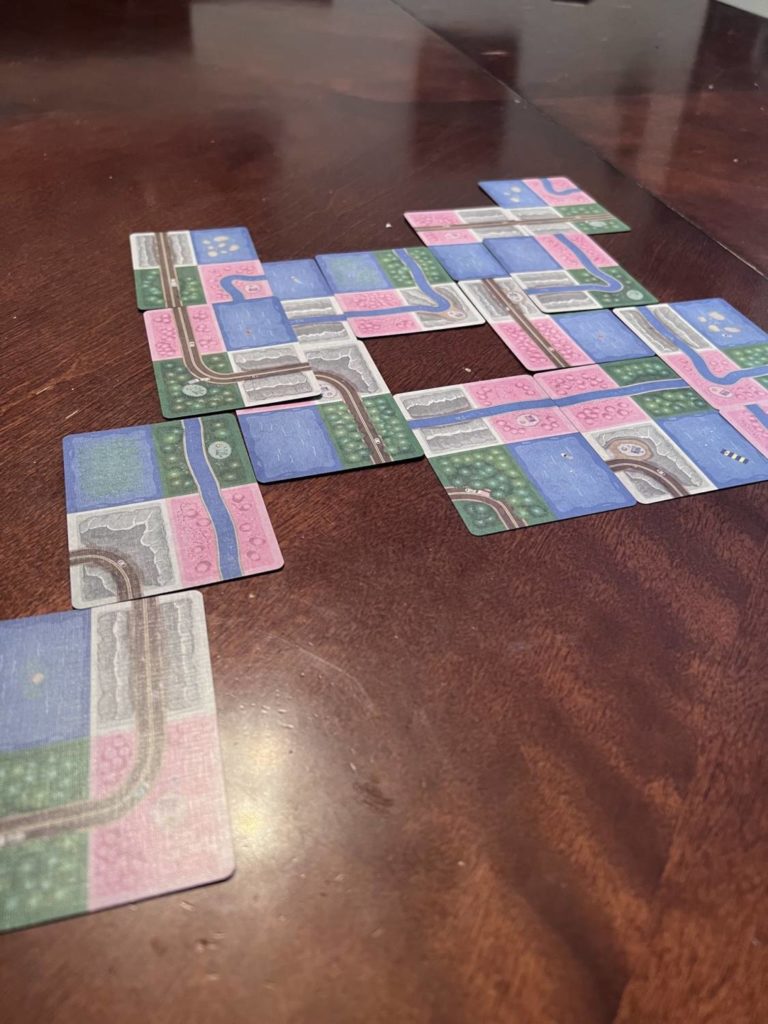
Beyond your specific objectives, there are some default scoring rules that help give your landscape an edge. For each of the four major biomes, you will score one point for every card involved in your largest consecutive area of that biome. This encourages you to try to build big, sprawling forests and massive lakes. However… you’ll also need to manage your roadways, as each separate road will dock your total score by two points. This is the most major departure from previous games in the Sprawlopolis series and reflects the thematic focus on the beauty of nature.
Final Thoughts
From a thematic standpoint, Naturopolis succeeds at its goals. The tension of choices you face between starting a new road versus continuing your sprawling biomes is at the core of the gameplay decisions. Balancing your plays between setting up big scoring payoffs and managing your negative point values leaves every one of your fifteen card plays teetering on the razor’s edge. With the context of the other games in this series, it’s easy to see how this game iterates on the formula and tweaks it a bit to make it feel new. There are also combination expansions that allow you to add this game with the other two in the series to combine cards and build out mega-landscapes with a mixture of natural beauty, cityscapes, and agricultural plots. To top it off, this all fits neatly in your pocket or wallet, perfect for bringing along for a quick game at a brewery or while waiting for a meal.
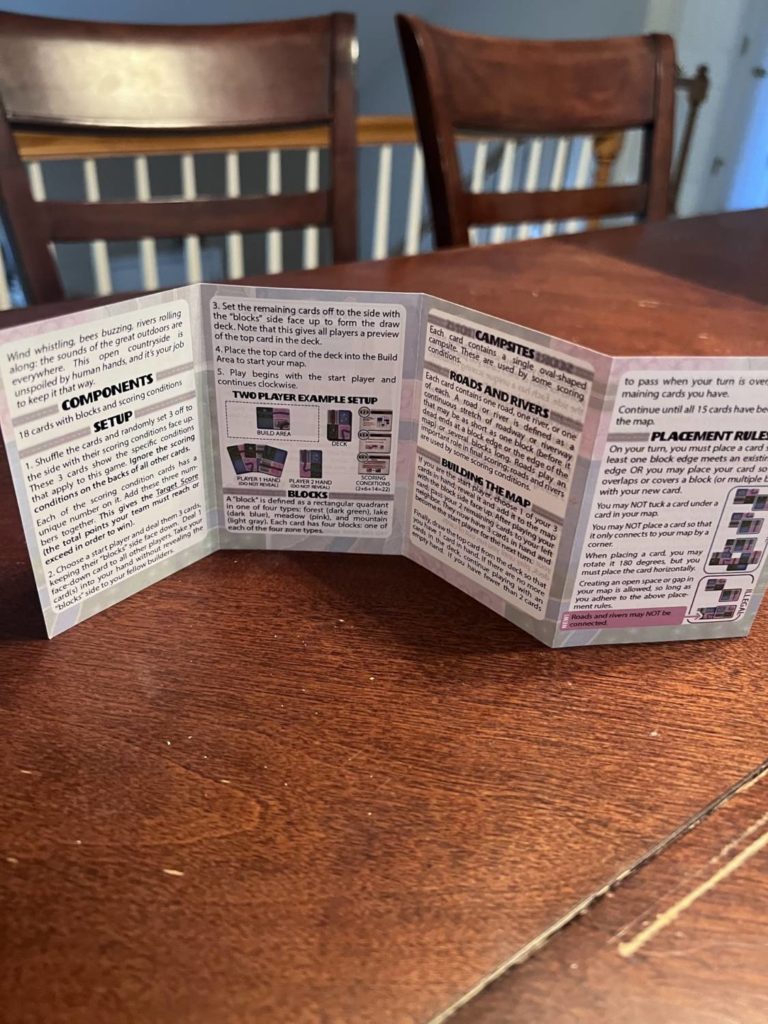
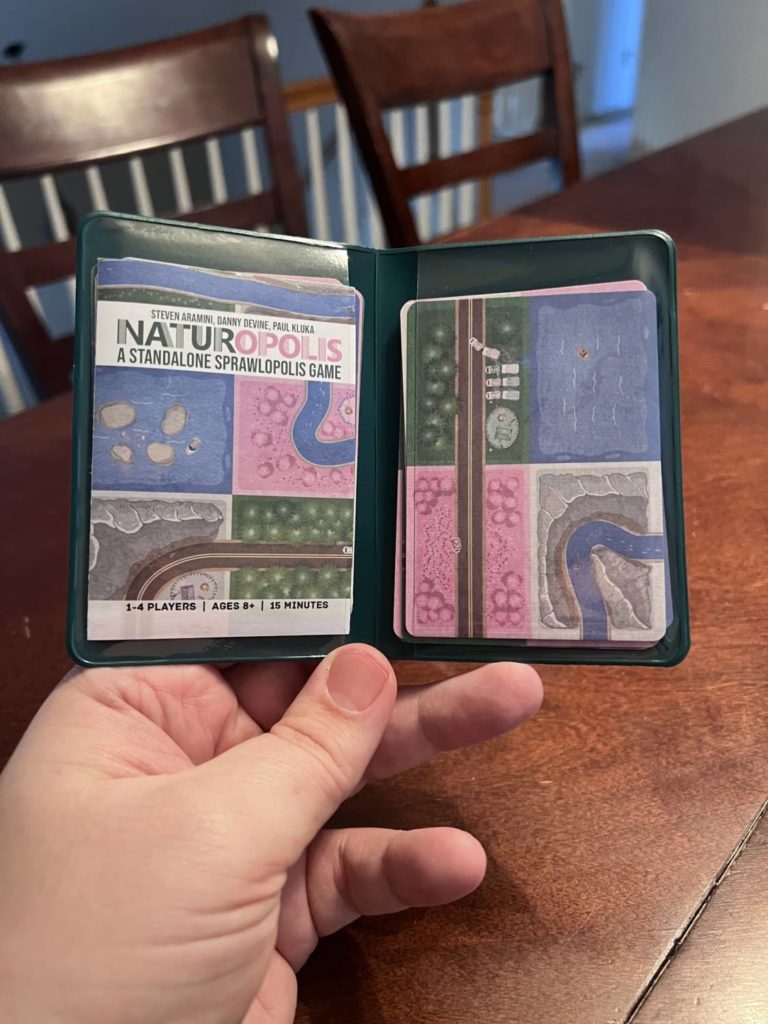
That being said, the same minor quibbles that exist with the other games in the series exist here as well. Though Button Shy bills these games as cooperative, in our testing it really felt more like a solo experience. Much of that is attributed to the wallet-sized nature of the game. Eighteen cards feel like a lot more as a solo player than it does when you’re splitting your card plays with someone else. The other minor issue I ran into when playing was that the road penalties are so severe compared to the point gains that the game almost always demanded you play around road placement rather than actually scoring points. That the theme marries the mechanics seems to be intentional, but as a player, actively working to mitigate losses was less fun than setting up the perfect landscape for my objective cards to pop off.
Still, at only $12 with several free expansions, it’s hard to pass up such a tight solo puzzler in such a small package. Be prepared: you will probably lose most of the time. While Naturopolis is unlikely to win over any converts who did not enjoy Sprawlopolis or Agropolis, it delivers more of the same compact gameplay and will delight fans of the series. If you’re unfamiliar with the series and worried about jumping in on this one, don’t be. It’s accessible enough and works solidly as a stand-alone game, and can serve as a great introduction to the world of Button Shy’s wallet-sized games.


